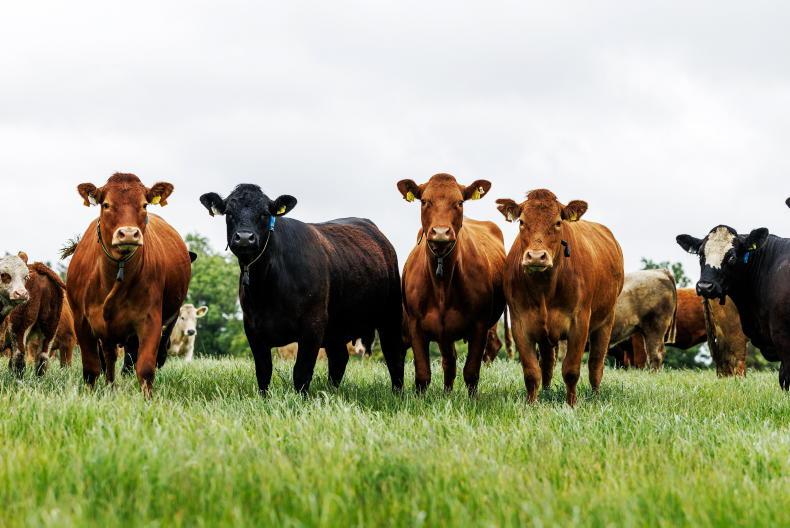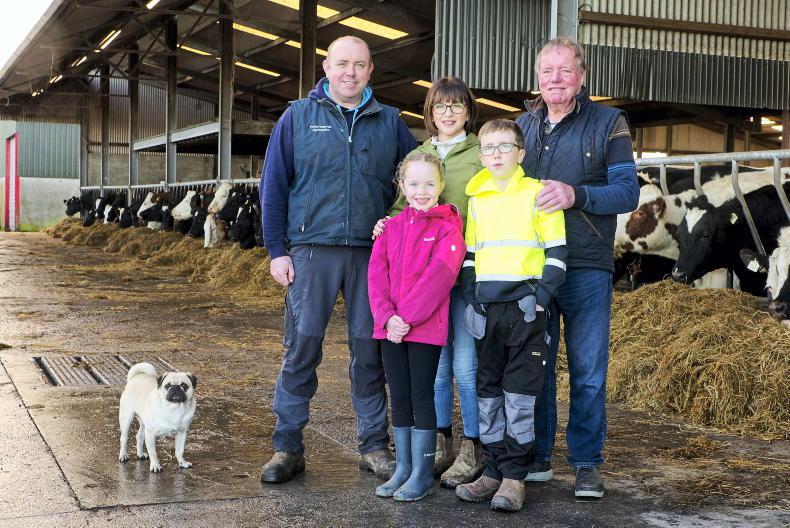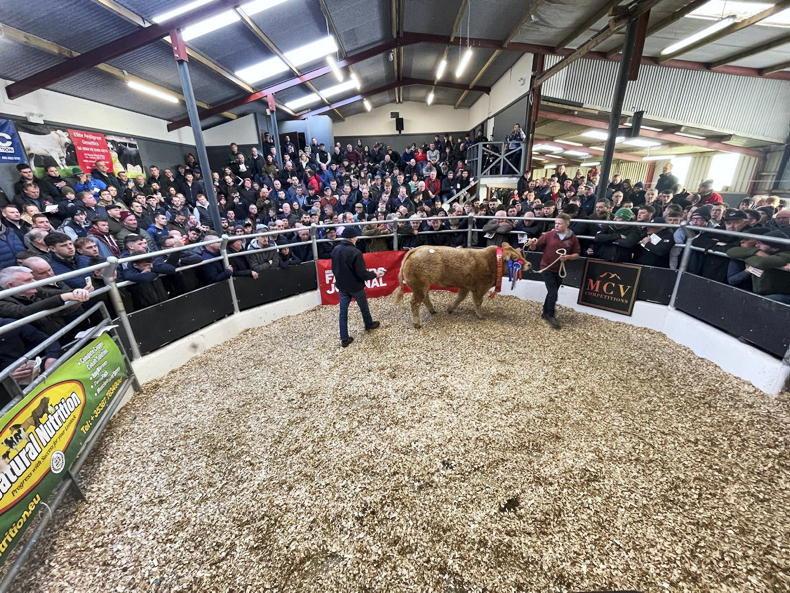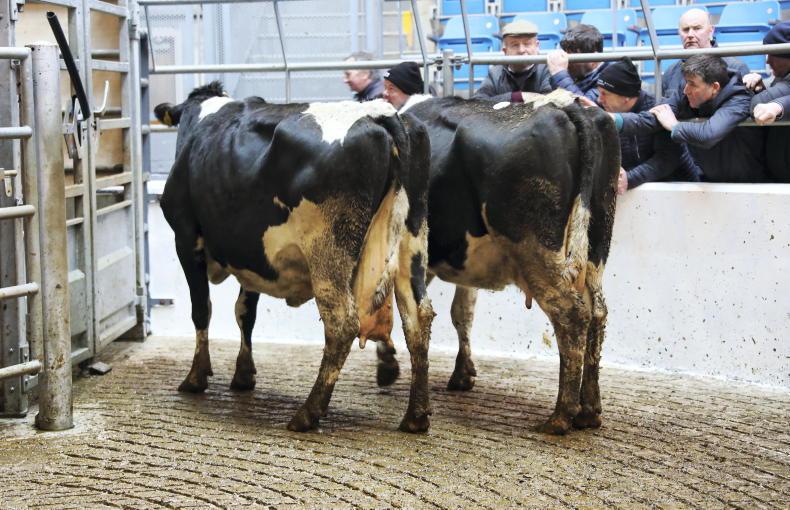Over recent years I have tried to run a very tight ship with my autumn-calving cows, and in particular, keep the calving period down to less than six weeks.
When this worked it was great. Calving was finished up very quickly and all calves were very similar in size.
This meant that vaccinations and de-horning could be done at the one time, and be completed well ahead of housing. The group of cows and calves could be brought inside in one go. It’s also great to have even batches of calves in the house.
I was very happy with how calving worked out last autumn. There were lots of good healthy calves and cows were in good condition and milked well, and once inside, the cows showed strong, prolonged heats.
I started to inseminate (using AI) in the middle of October, and was optimistic that everything was going well.
After three weeks, all the cows had been served once, so it was a watching game for repeats. In the fifth week I only had two repeats and I was starting to feel a little smug. Week six brought four more repeats, making six in total. I was still happy enough with that.
I stopped serving the cows after the six weeks as I was content that I had a good hit.
I wasn’t feeling so smug now
But in the next three weeks things started to go downhill. Three of the original six repeats came back again, and what was worse was that three more cows (which had only been served once) came back. I wasn’t feeling so smug now.
A group of maiden heifers weren’t any better. I had 15 that were served with AI, but there seemed to be a fair bit of activity after I had finished breeding.
Scanning
To say that I was apprehensive about scanning was an understatement. But I prepared myself for a bad result, and unfortunately that is what I got. There were three more cows not in-calf, making a total of nine empty. And there were only nine out of 15 heifers in calf.
It is probably the worst scanning result that I have ever had, but it is what it is and it’s too late now to do anything about it. I have to try and find out why it happened and make sure it doesn’t happen again. I also have to deal with the reduced numbers and move on.
What went wrong?
I had teaser bulls running with the cows and the heifers, so it is unlikely (but not impossible) that I missed some heats.
If I didn’t miss the heats, then perhaps they were in-calf for a while and suffered early embryonic absorption. There is not a lot I could have done about that.
At the moment I can’t really pinpoint the problem
It’s also possible that I am not as good at AI as I thought I was, although six of the cows that are not in-calf were only served with AI once, so didn’t repeat in the following three weeks.
The poor results with the heifers could also be my AI skills, or perhaps due to substandard semen.
At the moment I can’t really pinpoint the problem, or maybe it is a combination of issues. I will do a little more investigation, but it may be that I won’t be able to conclusively say why this has happened.
Next autumn
I’m already starting to think about next autumn and what I can do differently. I could go back to a nine-week breeding period, or I could consider buying a bull to run as a sweeper.
I don’t like extending the calving spread but I may have to. I’m reluctant to go down the bull route because I would probably need two bulls, and then it would only be for a few weeks in the year.
I have a lot to think about and I’m not really sure yet what I will do.
I’m glad that I have found out early
This has been a difficult pill to swallow, and it has been a disappointing start to the new year.
Having said that, I’m glad that I have found out early. I can wean the cows (that are not in-calf) and get them fattened and away off farm. Then the heifers that are not in-calf can be moved on by the spring.
It all means I will have less stock to carry at grass this year, although that might yet turn out to be a blessing.
Read more
Watch: Farmer Writes - our customers need to cop on to our costs
Farmer Writes: plagued by sucking cows in the autumn
Over recent years I have tried to run a very tight ship with my autumn-calving cows, and in particular, keep the calving period down to less than six weeks.
When this worked it was great. Calving was finished up very quickly and all calves were very similar in size.
This meant that vaccinations and de-horning could be done at the one time, and be completed well ahead of housing. The group of cows and calves could be brought inside in one go. It’s also great to have even batches of calves in the house.
I was very happy with how calving worked out last autumn. There were lots of good healthy calves and cows were in good condition and milked well, and once inside, the cows showed strong, prolonged heats.
I started to inseminate (using AI) in the middle of October, and was optimistic that everything was going well.
After three weeks, all the cows had been served once, so it was a watching game for repeats. In the fifth week I only had two repeats and I was starting to feel a little smug. Week six brought four more repeats, making six in total. I was still happy enough with that.
I stopped serving the cows after the six weeks as I was content that I had a good hit.
I wasn’t feeling so smug now
But in the next three weeks things started to go downhill. Three of the original six repeats came back again, and what was worse was that three more cows (which had only been served once) came back. I wasn’t feeling so smug now.
A group of maiden heifers weren’t any better. I had 15 that were served with AI, but there seemed to be a fair bit of activity after I had finished breeding.
Scanning
To say that I was apprehensive about scanning was an understatement. But I prepared myself for a bad result, and unfortunately that is what I got. There were three more cows not in-calf, making a total of nine empty. And there were only nine out of 15 heifers in calf.
It is probably the worst scanning result that I have ever had, but it is what it is and it’s too late now to do anything about it. I have to try and find out why it happened and make sure it doesn’t happen again. I also have to deal with the reduced numbers and move on.
What went wrong?
I had teaser bulls running with the cows and the heifers, so it is unlikely (but not impossible) that I missed some heats.
If I didn’t miss the heats, then perhaps they were in-calf for a while and suffered early embryonic absorption. There is not a lot I could have done about that.
At the moment I can’t really pinpoint the problem
It’s also possible that I am not as good at AI as I thought I was, although six of the cows that are not in-calf were only served with AI once, so didn’t repeat in the following three weeks.
The poor results with the heifers could also be my AI skills, or perhaps due to substandard semen.
At the moment I can’t really pinpoint the problem, or maybe it is a combination of issues. I will do a little more investigation, but it may be that I won’t be able to conclusively say why this has happened.
Next autumn
I’m already starting to think about next autumn and what I can do differently. I could go back to a nine-week breeding period, or I could consider buying a bull to run as a sweeper.
I don’t like extending the calving spread but I may have to. I’m reluctant to go down the bull route because I would probably need two bulls, and then it would only be for a few weeks in the year.
I have a lot to think about and I’m not really sure yet what I will do.
I’m glad that I have found out early
This has been a difficult pill to swallow, and it has been a disappointing start to the new year.
Having said that, I’m glad that I have found out early. I can wean the cows (that are not in-calf) and get them fattened and away off farm. Then the heifers that are not in-calf can be moved on by the spring.
It all means I will have less stock to carry at grass this year, although that might yet turn out to be a blessing.
Read more
Watch: Farmer Writes - our customers need to cop on to our costs
Farmer Writes: plagued by sucking cows in the autumn










SHARING OPTIONS